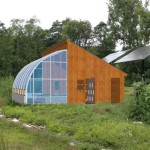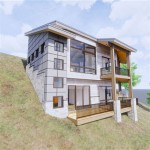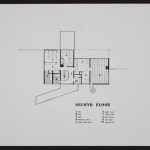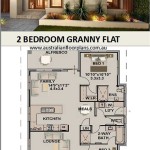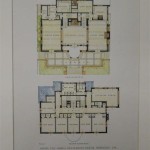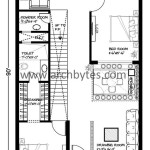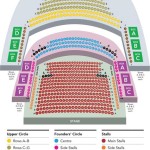Master Bedroom Floor Plan With Measurements
A well-designed master bedroom offers a sanctuary for relaxation and rejuvenation. Careful planning, including precise measurements, is crucial to achieving a functional and aesthetically pleasing space. This article explores the essential elements of a master bedroom floor plan with measurements, offering guidance for creating a comfortable and personalized retreat.
The first step in designing a master bedroom floor plan involves determining the available space. Accurate measurements of the room's length, width, and height are essential. These dimensions serve as the foundation for all subsequent design decisions, from furniture placement to lighting fixtures. It is recommended to use a laser measuring tool for precise readings, minimizing errors that can impact the overall layout.
Once the room's dimensions are established, the next step involves defining the desired layout. This includes determining the placement of the bed, which typically serves as the focal point of the master bedroom. Standard king-size beds measure approximately 76 inches wide and 80 inches long, while queen-size beds measure around 60 inches wide and 80 inches long. Allowing sufficient space for movement around the bed is crucial, typically a minimum of two to three feet on each side and at the foot of the bed.
Beyond the bed, other key furniture pieces in a master bedroom often include nightstands, dressers, and perhaps a seating area. Nightstands typically flank the bed, providing convenient surfaces for lamps, books, and other personal items. Standard nightstand dimensions range from 20 to 30 inches in width. Dressers, essential for clothing storage, vary significantly in size, with common widths ranging from 48 to 72 inches. If space permits, a small seating area with chairs or a loveseat can enhance the room's functionality and comfort.
Incorporating adequate closet space is a critical consideration in master bedroom design. Walk-in closets offer ample storage and organizational possibilities, while reach-in closets provide a more space-saving solution. When planning closet space, consider factors such as wardrobe size, organizational preferences, and the potential need for built-in shelving or drawers. Measuring the designated closet area accurately ensures optimal utilization of the available space.
Bathroom access is another essential element to consider when designing a master bedroom. Many modern master bedrooms include an ensuite bathroom, offering convenience and privacy. The bathroom's location and size should be carefully considered in relation to the overall bedroom layout. Ensuring sufficient clearance around bathroom entryways and fixtures is crucial for comfortable movement and accessibility.
Lighting plays a significant role in creating a relaxing and inviting atmosphere in the master bedroom. Natural light sources should be maximized, while artificial lighting should be strategically implemented to cater to various needs. Consider incorporating a combination of ambient lighting for overall illumination, task lighting for specific activities like reading, and accent lighting to highlight decorative features.
Window placement and size significantly impact the room's natural light and ventilation. Large windows can create a sense of openness and brightness, while strategically placed windows can offer scenic views. When planning window placement, consider factors such as privacy, sunlight exposure, and the overall aesthetic of the room. Accurate measurements of window openings are necessary for selecting appropriate window treatments.
Door placement within the master bedroom is another critical consideration. Doors should be positioned to facilitate smooth traffic flow and minimize disruption to the overall layout. The distance between doors and other architectural elements, such as walls and windows, should be carefully measured to ensure adequate clearance and accessibility.
Electrical outlets and switches should be strategically located throughout the master bedroom to accommodate various electronic devices and lighting needs. Consider the placement of bedside lamps, charging stations, and other electronic devices when determining the optimal location for outlets and switches. Careful planning ensures convenient access to power sources without cluttering the space.
Finally, incorporating personal touches and decorative elements can enhance the overall aesthetic and create a personalized sanctuary. Artwork, rugs, and other decorative accessories can add personality and warmth to the space. When selecting decorative elements, consider the room's color scheme, style, and overall design theme. Accurate measurements of wall spaces and furniture dimensions are crucial for selecting appropriately sized artwork and decorative pieces.
In conclusion, a well-planned master bedroom floor plan with accurate measurements serves as the foundation for a comfortable and functional space. Careful consideration of furniture placement, closet space, bathroom access, lighting, window placement, door placement, electrical outlets, and personal touches ensures a personalized retreat that promotes relaxation and rejuvenation.

Master Bedroom Floor Plans Types Examples Considerations Cedreo

Pin On Decor Bedroom

9 Tips To Consider When Planning Your Bedroom Layout

Master Bedroom Floor Plans An Expert Architect S Vision

Master Bedroom Floor Plan Cadbull

Master Bedroom Floor Plans An Expert Architect S Vision

Bedroom Floor Plans And Layouts With Dimensions Decide Your House

How To Read Floor Plans With Dimensions A Guide

Master Suite Updated Plans Erin Kestenbaum

Master Bedroom Floor Plans Types Examples Considerations Cedreo

